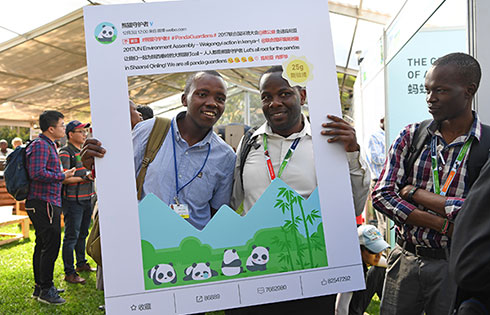Distribution big challenge for business
JOHANNESBURG - Companies trying to do business in Africa find that distribution is their biggest challenge, according to Business Times newspaper in Johannesburg on Sunday.
Quoting a survey report on consumers in Africa by global management consulting company Accenture, the newspaper said more than 60 percent of people in Africa live in rural areas and have limited access to transport.
Because of this, covering "the last mile" to reach the consumer can be extremely costly and difficult.
However, the survey found Africa is becoming more attractive to companies as its consumer market is growing, while more developed markets shrink or grow at slow rates.
Grant Hatch, executive director of strategy at Accenture said that just because a product has worked in a developed market, vendors should not assume it will work in Africa.
The company expects consumer spending in sub-Saharan Africa to rise to nearly $1 trillion by 2020. It has grown 4 percent a year, reaching nearly $600 billion in 2010.
"We re-checked the numbers because they seemed too optimistic. But huge changes are likely to take place in the next 10 years," said Hatch.
Nine countries will account for nearly three-quarters of total consumer spending in sub-Saharan Africa by 2020: Kenya, Ethiopia, Uganda, Angola, Zambia, South Africa, Senegal, Ghana and Nigeria, says Accenture.
The report estimates South Africa will spend $315 billion in 2020, Nigeria $167 billion and Ethiopia $43 billion.
It said South African companies need to change the way they do business. They need to change the way they access data, ensure products meet needs and work out how to minimize risk.
In addition, they need to decide whether to source locally or import, and figure out how to reach customers, many of whom live in rural areas.
Accenture forecasts that 50 percent to 60 percent of the population of sub-Saharan Africa earns less than $100 a month on average and buys basic goods with cash from open-air markets and street stalls.
It found that these consumers generally avoid formal retail stores and believe they get better deals from local, well-known, informal sellers.
However, they will become more affluent and their brand allegiances will have been formed by the time their purchasing power increases.
Working families earning between 100 and $250 a month and comprising 20 percent to 30 percent of the population will represent 33.3 percent of the sub-Saharan market by 2015.
It said people who are a notch higher, earning $250 to $750 each a month, have money to buy items like cigarettes, jeans, and the occasional bottle of perfume.
The report found that professionals shop at supermarkets and upscale shopping malls and prefer luxury brands such as BMW, Mercedes and Gucci. This group represents 1 percent to 2 percent of sub-Saharan Africa's people.
The report says companies wanting to do business in Africa must assess the risk and decide whether to set up a business, buy one, get into a partnership or license their products to another company.
It noted that acquisitions can be expensive and time-consuming, but can provide immediate access to existing African networks and distribution channels in Africa.





















